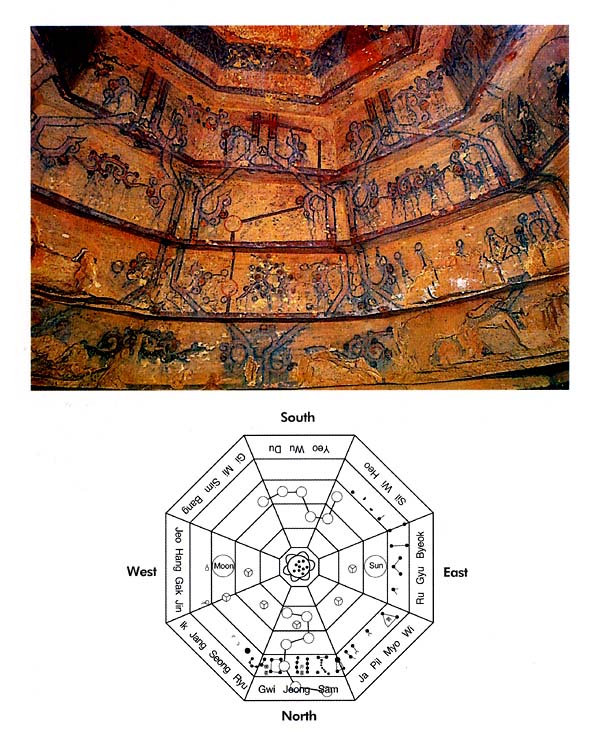
The Big Dipper
North side of the ceiling
Deokhwa-ri1 Tomb #2, late 5th century
Taean City, North Korea
The Big Dipper has special significance in Goguryeo tombs; as the predominant constellation in the northern sky, the direction associated with death, the Big Dipper's symbolic function was to protect the deceased in his afterlife. A photo of the constellation on the ceiling of Tomb #2 in Deokhwa-ri is shown here; below the photo is a diagram of the entire ceiling. The position of the sky in this chart corresponds to the time when Virgo (Gak) is setting in the West and Andromeda (Gyu) is rising in the east2.
This shows that the Koreans at this time recognized all 28 of the Chinese constellations3, but assigned them to different directions in the sky. Since the sky revolves as seen from earth, this is not a contradiction. It just amounts to choosing a different time to take the "snapshot" of the stars' position.
